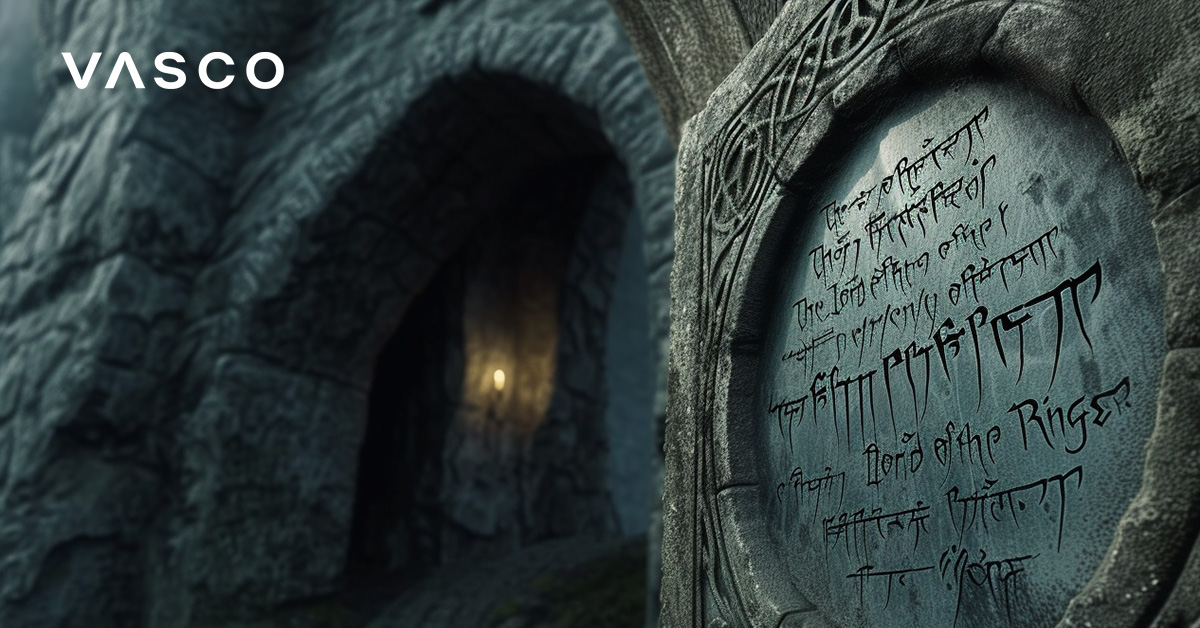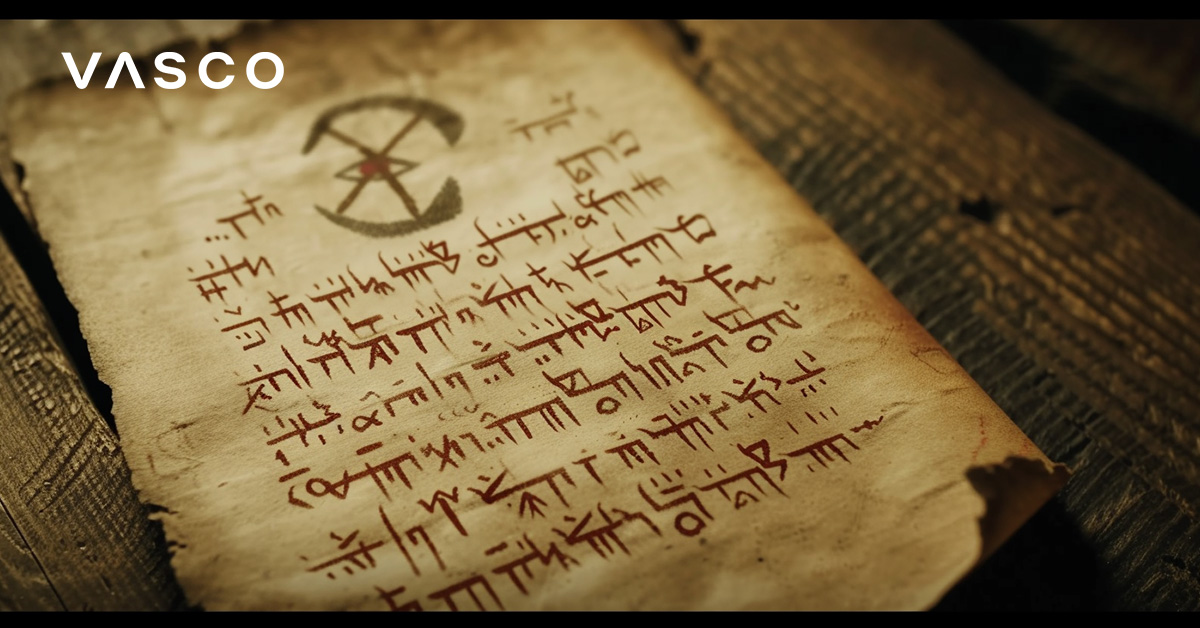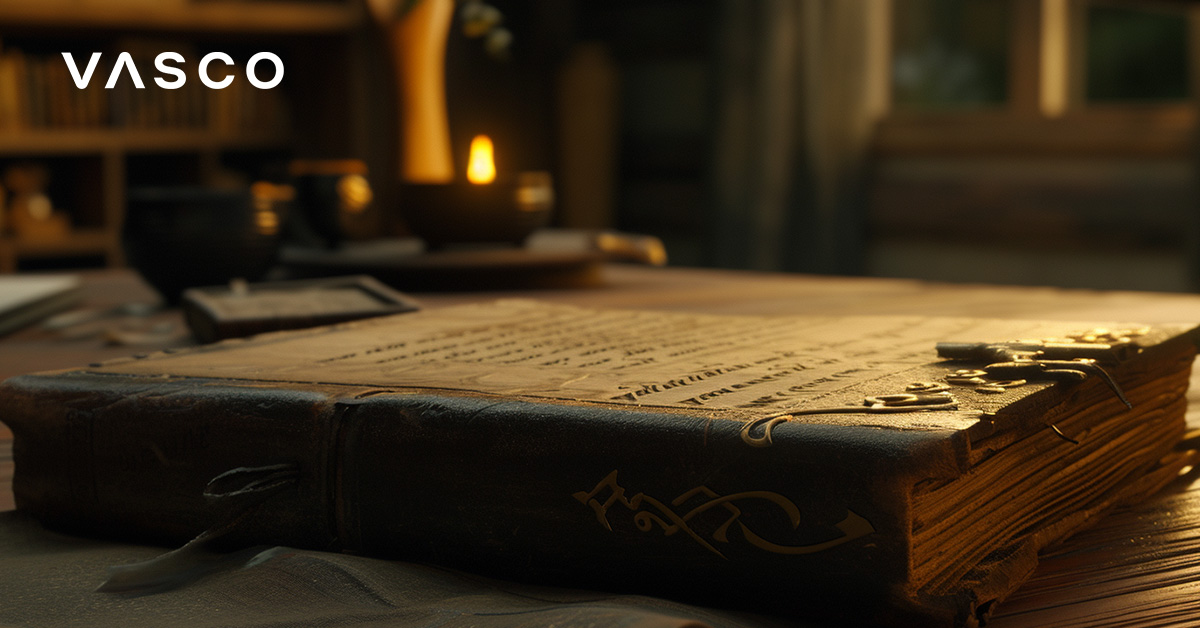This is another article on our series of fictional languages created by J.R.R Tolkien.
On our blog, you can also find an in-depth analysis of the Quenya language and the Black Speech of Mordor, as well as an article scratching the surface of the most popular languages of Middle-Earth in general.
This time we’ll dive deeper into the Sindarin language, find out more about the secret Dwarfish tongue called Khuzdul and learn the history of the common language of Middle-earth called Westron.
So, let’s see what we’ll learn in this article:
- What is the Sindarin language?
- Who spoke it?
- What is Khuzdul?
- Why was the language kept secret?
- What is Westron?
- Who spoke it in Middle-earth?
- Is it possible to learn any of these languages?
So, without further ado, let’s start the journey!
Table of Contents:
Sindarin: the stereotypical “Elvish” language
Sindarin is the language most commonly associated with the Elves. It is also the most widely spoken Elvish tongue in The Lord of the Rings.
FAQ:
What is Sindarin?
How to learn Sindarin?
What language is Sindarin based on?
What is Khuzdul?
How to learn Khuzdul?
What language is Khuzdul based on?
What is Westron?
How to learn Westron?
What language is Westron based on?

The origins of Sindarin
Tolkien created Sindarin around 1944. He wanted it to be a Welsh-type language that was related to Quenya the same way Welsh was related to Latin.
The author of The Lord of the Rings also wrote many pieces of work in Sindarin, as he very much wanted to give it a feel of a natural language. Nevertheless, Tolkien did not provide a detailed description of this tongue in any of his books.
In the 1970s many Tolkien fans started writing poems, texts, phrases, names, and even tattoos in Sindarin. Despite the fact that the total corpus of its vocabulary consisted of only a few hundred words, the fans made this fictional tongue flourish.
Note that Tolkien didn’t want his languages to be complete enough to make a conversation. Therefore, newly created texts in Sindarin, with the dialogues from The Lord of the Rings movies included, often use new words and novel grammatical structures.
Sindarin in the history of Middle Earth
Within the realm of Middle-earth, in the Second Age, Sindarin was a lingua franca among Elves and their friends. That’s why the West Gate of Moria was inscribed in this tongue. When Frodo ask what’s the Elvish word for friend, he means what’s Sindarin word for friend.
However, the Third Age saw the rise of the Westron language, which replaced Sindarin as the universal tongue of Middle-earth. Nevertheless, Westron was heavily influenced by its Elvish predecessor.
In the Third Age, however, Sindarin was still spoken by some noble inhabitants of Minas Tirith. What’s more, Aragorn, who was raised among the Elves in Rivendell, could speak it fluently.
Let’s learn some Sindarin vocabulary
There were around 25 000 published words in Sindarin in 2008. Let’s learn some of them from the below table:
| Sindarin | English |
|---|---|
| amar | earth |
| aur | day |
| dû | night |
| naur | fire |
| menel | sky |
| daer | great |
| benn | male |
| bess | female |
| nen | water |
| corf | ring |
| fae | soul, spirit |
Let’s read some Sindarin
The Lord of the Rings book features a long poem written in the Sindarin language. It’s called A Elbereth Gilthoniel, and it’s an Elvish hymn to Varda. Varda, or Elbereth, was one of the angelic creatures serving Eru Ilúvatar, the equivalent of the Christian God.
The poem is written in iambic tetrameters and has been compared to the Roman Catholic hymns to Mary, mother of Jesus.
Unfortunately, The Lord of the Rings doesn’t include any translation of the piece. It is, however, described in the books in the following way:
“The sweet syllables of the elvish song fell like clear jewels of blended word and melody. ‘It is a song to Elbereth’, said Bilbo” (The Lord of the Rings, J.R.R. Tolkien)
There’s also a hint on the meaning later in the book:
“Good night! I’ll take a walk, I think, and look at the stars of Elbereth in the garden. Sleep well!” (The Lord of the Rings, J.R.R. Tolkien)
Luckily, The Road Goes On, the 1967 collection of sheet music written by a British composer Donald Swann to accompany the poetry from Middle-earth, includes the translation of the poem.
Here’s the poem in Sindarin:
A Elbereth Gilthoniel
silivren penna míriel
o menel aglar elenath!
Na-chaered palan-díriel
o galadhremmin ennorath,
Fanuilos, le linnathon Everwhite,
nef aear, sí nef aearon!
A Elbereth Gilthoniel
o menel palan-diriel,
le nallon sí di’nguruthos!
A tiro nin, Fanuilos!
And here’s the English translation:
O Elbereth Starkindler
(white) glittering slants down
sparkling like jewels
from [the] firmament [the] glory [of] the star-host!
To-remote distance far-having gazed
from [the] tree-tangled middle-lands,
Fanuilos, to thee I will chant
on this side of ocean, here on this side of the Great Ocean!
That would be it when it comes to the Sindarin language. Later in the article, we will see where you can learn to speak it.
Khuzdul: the secret language of Dwarves
J.R.R. Tolkien started developing Khuzdul before the publication of The Hobbit in 1937. Some Khuzdul names even appeared in the earlier versions of Silmarillion.
Hebrew was the main source of inspiration for this Dwarven tongue. Tolkien also pointed out certain parallels between Jews and dwarfs. Both were locals and aliens in their own country.
What do we know about Khuzdul
Unfortunately, there’s not much Khuzdul vocabulary to be found. Nevertheless, Tolkien claimed that he developed this language to some degree, including phonology and grammar.
The syllable structure of Khuzdul made this tongue harsh, according to the Elves, who found its sound ugly. As a matter of fact, Tolkien himself stated that the Dwarvish language was cacophonic rather than beautiful.
Khuzdul was given to Dwarves by Aulë — a divine smith and one of the immortal beings that participated in the creation of Arda (the equivalent of the real-world Earth). And, as Dwarves showed deep respect for Aulë, little changes were made to Khuzdul over time.
Dwarves used the Cirith, a script created by Tolkien and based on the real-world runes, to write down Khuzdul. Dwarves adopted the runes from the Elves and modified them to be more representative of the Khuzdul language.
Khuzdul writing system
They would eventually use two different methods of writing. One of them was developed by the inhabitants of Moria in Khazad-dûm and the second came from Erebor — The Lonely Mountain known from The Hobbit.
Let’s take a look at a Dwarfish battle cry written both in Moria and Erebor versions of Cirith.
Moria:
(Source: Wikipedia)
and the Romanized version:
baruk khazâd khazâd ʻaimênu
Erebor:
(Source: Wikipedia)
and the Romanized version:
baruk khazâd khazâd aimênu
The history of Khuzdul
When it comes to the internal history of this language, little is known about Khuzdul. It’s mainly because Dwarves kept it secret. They believed that this language was reserved only for them, so they reluctantly taught it to other races. Also, they made it harsh and difficult to use, so that it would be very hard to learn and speak.
As a matter of fact, Dwarves used other languages to communicate with outsiders (for instance, Westron). They used Khuzdul only to speak between themselves.
The highest level of secrecy was reserved for their real names, which Dwarves considered very intimate. The names of the Dwarves we all know from the books and movies are all “outer-names” reserved for other races.
However, because of a close friendship with some humans of Middle-earth, they were also using Khuzdul among themselves in their presence.
Let’s learn some vocabulary right now:
| Khuzdul | English |
|---|---|
| aglâb | language |
| duban | valley |
| gundu | underground hall |
| Khuzd | Dwarf |
| uzn | shadow |
| zigil | silver (colour) |
| kheled | glass |
| felak | a tool for cutting stone |
| uzbad | lord |
| shathûr | could(s) |
Let’s read some Khuzdul
Here are 3 phrases in Khuzdul that can be found in some of J.R.R. Tolkien’s works. Let’s see what they mean in English:
- Balin Fundinul Uzbad Khazaddûmu — Balin, Son of Fundin, Lord of Moria
- baruk Khazâd — axes of the Dwarves
- Khazâd ai-mênu — the Dwarves are upon you!
We can now see that the battle cry we examined earlier on can be roughly understood as “Axes of Dwarves, the Dwarves are upon you!”.
That would be it when it comes to Khuzdul. Stay with us until the end to see where can you learn some of this tongue.
Westron: the common tongue of Middle-earth
Originally, Westron was the language of the Dúnedain of Middle-earth, but by the end of the Third Age, it was used by the majority of creatures of the north-western region of this fictional world.
The Westron language emerged from Adûnaic — the language of Númenorians. The Men of Númenor brought it to Middle-earth when they established trade outposts there in the Second Age.
Westron emerged as a creole tongue after Adûnaic fused with the speech of the Men of Twilight.
Note: There were 3 kinds of men living in the Middle-earth in the Third Age. They were: High Men — Gondorians, noble descendents of Númenor; Men of Darkness — Haradrim, Easterlings, Variags, Black Númenorians, Corsairs of Umbar, Half-Trolls, who served Sauron; Men of Twilight or Middle Men — other Men in Middle-earth who descended from Edain, ancient Men who fought alongside Elves in the war with Morgoth. The term ‘Men of Twilight’ reflects the attitude of Gondorians towards them — they thought that Middle Men were not their enemies, but were not noble enough to be High Men as well.
History of Westron
After the fall of Númenor (which may be the Middle-earth equivalent of both the Flood Myth and the destruction of Sodom and Gomorrah) the Númenorians abandoned Adûnaic who was then spoken by the Men of Twilight. Having become a harsh language with a Khuzdul influence, Westron softened thanks to the influences from such languages as Sindarin.
In the Third Age, Westron was spoken by almost all Men of Middle-earth, as well as other creatures, including Hobbits (however, they developed their own dialect of Westron called Hobbitish). This common tongue of Middle-earth was also used by Dwarves as their public language.
When it comes to the Men of Middle-earth, Westron was also adopted by the shape-shifting creature called Beorn, as well as the inhabitants of the town by the lake near the Lonely Mountain. The examples of humans who didn’t use Westron were Rohirrim, The Drúedain, and the Men of Dunland.
Westron in the books
Westron was also the language spoken and understood by the protagonists of both The Hobbit and The Lord of the Rings. Therefore, it is a common misconception that Westron was simply English. As a matter of fact, Tolkien provided its readers with the “English translation” of this common tongue of Middle-earth.
The character names, such as Frodo, Sam and Pippin, were not their actual names. Their Westron equivalents were Maura, Ban, and Razar.
Let’s look at the below table to learn more Westron vocabulary:
| Westron | English |
|---|---|
| Karningul | Rivendell |
| Labin-nec | Bag End |
| kuduk | hobbit |
| banakil | halfling |
| branda | borderland |
| Branda-nîn | Brandywine (the name of the river) |
| Bilba Labingi | Bilbo Baggins |
| Incánus | Gandalf |
| orka | orc |
| narag | dwarf |
You can see that it resembles Khuzdul, but it way softer thanks to the influences of the Sindarin language.
So, that would be it for Westron. Let’s now have a look at the reliable sources for learning the languages of Middle-earth from.
Where to learn Sindarin, Khuzdul and Westron
To be honest, the best source of information on the above languages can be found in The Return of the King appendices. However, you can learn quite a lot about Tolkien’s languages from The Elfish Linguistic Fellowship (abbreviated E.L.F).
It is an international organization that examines the fictional languages created by J.R.R. Tolkien. They release two printed journals: Vinyar Tengwar and Parma Eldalamberon. They also have their own online journal called Tengwestië.
What’s more, you can find more vocabulary of the above languages here, here and here.
Sindarin, Khuzdul and Westron: Conclusion
Despite the fact that The Lord of the Rings was published over half a century ago, the work of J.R.R. Tolkien is still as popular as it was years ago, maybe now even more so.
We didn’t hear Tolkien’s languages in Peter Jackson’s adaptation of the book very often, but, luckily, there are a lot of materials on the Middle-earth speeches written by the author himself.
And if you have a passion for learning languages, but not necessarily time and motivation, be sure to check our store. With our newest standalone device, Vasco Translator V4, you have 108 languages in your pocket! Maybe someday even Sindarin, Khuzdul and Westron too…
In a nutshell
Sindarin is the Elvish language most associated with The Lord of the Rings, and was developed by Tolkien around 1944. It was a creole tongue, heavily influenced by Welsh and Quenya, and was the common language of Middle-earth in the Second Age. Khuzdul is the secret language of the dwarves, created by Tolkien and based on Hebrew. Dwarves kept it secret and used it only among themselves, using Westron as their public language. Westron is a creole language resulting from the fusion of Adûnaic and the speech of Men of Twilight. It was used by almost all creatures of the north-western region of Middle-earth in the Third Age, and was the language spoken and understood by all protagonists of The Hobbit and The Lord of the Rings. To learn more about Sindarin, Khuzdul and Westron, one can check The Elfish Linguistic Fellowship’s online journal, Tengwestië, as well as other sources.



















